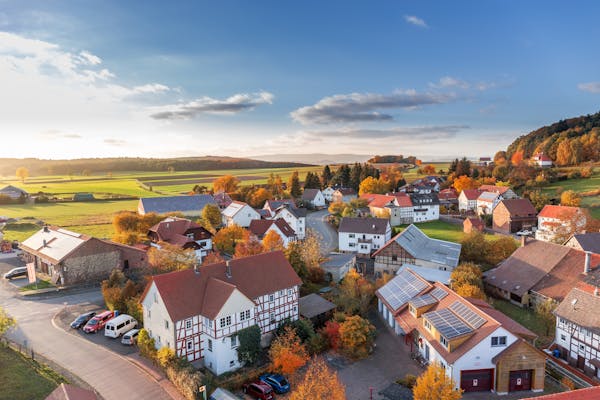The Impact of Green Lease Agreements on Property Values

Amelia Brown . Follow
8 months ago
In today's environmentally conscious world, the real estate market is witnessing a significant shift towards sustainability. Green lease agreements, designed to promote energy efficiency and environmentally friendly practices between landlords and tenants, are at the forefront of this transformation. These agreements not only contribute to reducing the carbon footprint but also hold the potential to enhance property values. As tenants increasingly prioritize sustainable living and working environments, properties with green lease provisions are becoming more attractive and valuable. This blog delves into the profound impact of green lease agreements on property values, exploring how sustainability commitments are reshaping the real estate landscape. Whether you're a property owner, investor, or tenant, understanding the financial and environmental benefits of green leases can provide a competitive edge in today's market. Join us as we uncover the ways in which green leasing is driving property value appreciation and fostering a more sustainable future.

What Are Green Lease Agreements?
Green lease agreements incorporate specific clauses that promote sustainable practices and energy efficiency in the management and operation of a property. These clauses can cover a wide range of areas including energy use, water conservation, waste management, and indoor environmental quality. The goal is to ensure both the landlord and tenant work together to achieve sustainability goals, thereby creating a mutually beneficial arrangement.
How Green Lease Agreements Influence Property Values?
1. Enhanced Marketability
Properties with green lease agreements are often more attractive to tenants who prioritize sustainability. This growing demand can lead to lower vacancy rates and faster lease-up times. As more businesses adopt corporate social responsibility policies, they seek properties that reflect their commitment to sustainability, making green-certified buildings a preferred choice.
2. Operational Cost Savings
Green lease agreements typically result in lower operational costs due to energy and water savings. These cost reductions not only benefit tenants but also increase the net operating income (NOI) of the property. Higher NOI can lead to an increase in the property’s market value, as it reflects greater profitability.
3. Regulatory Compliance and Incentives
Governments around the world are increasingly implementing regulations and offering incentives to promote sustainable building practices. Properties that comply with these regulations through green leases can benefit from tax incentives, grants, and other financial benefits. This compliance also positions the property favorably in the eyes of regulatory bodies and can prevent future penalties.
4. Risk Mitigation
Green lease agreements can help mitigate various risks associated with environmental regulations, energy price volatility, and climate change. By proactively addressing these issues, properties can avoid potential liabilities and enhance their long-term resilience. This risk mitigation can make the property a more stable and attractive investment.
5. Increased Tenant Retention
Tenants who benefit from lower utility costs and a healthier indoor environment are more likely to renew their leases. High tenant retention rates reduce the costs and disruptions associated with tenant turnover, further enhancing the property’s value. Satisfied tenants may also become advocates for the building, attracting additional high-quality tenants.
Key Components of Green Lease Agreements
To understand their impact fully, it is important to recognize the typical components of green lease agreements:
Energy Efficiency Requirements: Clauses may specify energy performance targets, the use of energy-efficient systems, and regular energy audits.
Water Conservation Measures: Agreements might include the installation of water-saving fixtures and systems and monitoring of water usage.
Waste Management Protocols: Provisions for recycling programs, waste reduction strategies, and proper disposal of hazardous materials.
Indoor Environmental Quality Standards: Requirements for the use of low-emission materials, proper ventilation, and regular air quality assessments.
Sustainability Reporting: Both parties may be required to report on sustainability initiatives and progress towards goals.
Challenges and Considerations
While green lease agreements offer numerous benefits, there are challenges to consider:
Initial Costs: Upgrading a property to meet green lease standards can require significant upfront investment. However, these costs are often offset by long-term savings and increased property value.
Tenant and Landlord Collaboration: Effective green leases require cooperation and communication between landlords and tenants. Both parties must be committed to achieving sustainability goals.
Market Perception: In some markets, the benefits of green leases are not fully recognized, and it may take time for their value to be reflected in property appraisals and transactions.
Conclusion
Green lease agreements have a profound impact on property values by enhancing marketability, reducing operational costs, ensuring regulatory compliance, mitigating risks, and increasing tenant retention. As sustainability becomes increasingly important in the real estate market, properties that adopt green leases are likely to see significant financial and environmental benefits. By fostering a collaborative approach to sustainability, green lease agreements represent a win-win scenario for landlords and tenants, ultimately contributing to a more sustainable and valuable built environment.
Recommended topics
Recommended from Guest Post
Lena Interprets

